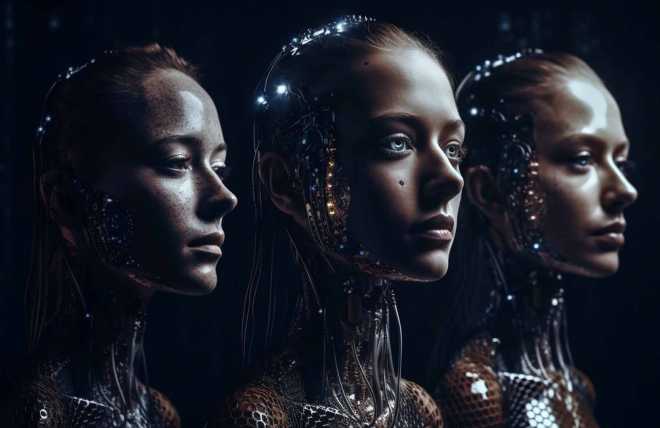ChatGPT Uncovered
The Future of Conversational AI
Evaluating ChatGPT: How Accurate and Useful is it in Real-world Applications?
Introduction
Brief overview of ChatGPT
ChatGPT, powered by OpenAI's GPT-4 architecture, is an advanced language model designed to understand and generate human-like text. Developed as a successor to GPT-3, it boasts enhanced capabilities, making it a powerful tool for a wide range of applications.
Importance of evaluating AI technologies
As AI technologies become more integrated into our daily lives, evaluating their accuracy and usefulness is crucial. By examining their strengths and weaknesses, we can identify areas for improvement, build trust in AI systems, and optimize their real-world applications.
ChatGPT's Architecture and Training
Overview of GPT-4 architecture
GPT-4 is built on the transformer model, a neural network architecture that has revolutionized natural language processing (NLP). The key innovation in transformers is the attention mechanism, which allows the model to weigh different parts of the input data according to their relevance. This mechanism enables GPT-4 to learn from vast amounts of unsupervised data, giving it impressive language capabilities.
Training process and dataset
ChatGPT's training involves two main steps: pre-training and fine-tuning. During pre-training, the model learns from a large dataset containing parts of the internet, acquiring grammar, facts, and some reasoning abilities. Fine-tuning narrows down the model's focus, using human feedback to refine its performance in specific tasks. However, the training data may have limitations, such as biases and outdated information.
Accuracy and Usefulness of ChatGPT
Language understanding and generation
ChatGPT excels in understanding and generating human-like text. Its strong grasp of vocabulary, grammar, and syntax allows it to produce coherent and contextually appropriate responses. However, handling ambiguity and nuance remains a challenge, which may lead to occasional inaccuracies.
Real-world applications and case studies
ChatGPT has numerous real-world applications, including:
- Customer support and virtual assistants: Providing quick, accurate, and personalized responses to user inquiries.
- Content generation and creative writing: Assisting with idea generation, editing, and even writing entire articles.
- Medical and legal advice: Offering preliminary information and guidance, although it is essential to consult professionals for critical decisions.
- Language translation and tutoring: Helping users learn new languages or improve their language skills.
Benchmarks and performance metrics
To evaluate ChatGPT's performance, we can compare it to human performance, use standard NLP benchmarks, or create customized evaluations for specific applications. These evaluations can provide insights into ChatGPT's effectiveness and identify areas for improvement.
Limitations and Challenges
Bias and ethical concerns
One major concern is the potential biases in ChatGPT's training data, which may lead to unfair or biased responses. Ensuring fairness and inclusiveness is crucial, and addressing potential misuse is a top priority for AI developers.
Technical limitations
ChatGPT has some technical limitations, such as the inability to handle long-term context, occasionally generating plausible but incorrect answers, and sensitivity to input phrasing. These issues can impact the accuracy and usefulness of the AI in certain situations.
Future improvements and research directions
To address these limitations and challenges, researchers are focusing on reducing biases, improving context awareness and reasoning capabilities, and developing domain-specific models for specialized applications.
Conclusion
ChatGPT has shown remarkable accuracy and usefulness in a variety of real-world applications. However, it is essential to continuously evaluate and improve the AI to address its limitations and ensure its ethical deployment. As we continue to refine and develop AI-powered conversational agents, they will become an increasingly valuable tool in our daily lives.
The future of AI lies in overcoming the challenges faced by language models like ChatGPT, making them more accurate, ethical, and versatile.
Faq
- Q: What is ChatGPT?
A: ChatGPT is an advanced language model based on GPT-4 architecture, designed to understand and generate human-like text for various applications. - Q: What are some real-world applications of ChatGPT?
A: Applications include customer support, content generation, medical and legal advice, and language translation and tutoring. - Q: What are the limitations of ChatGPT?
A: Limitations include biases in training data, inability to handle long-term context, and sensitivity to input phrasing.
Pros and Cons
Pros:
- Advanced language understanding and generation
- Diverse real-world applications
- Continual improvement and refinement
Cons:
- Bias in training data
- Technical limitations impacting accuracy
- Ethical concerns and potential misuse
Resources
- Mastering GPT-4 A Comprehensive Guide to Harnessing the Power of AI: Unleash the Potential of OpenAI's GPT-4 for Your Projects by Saif Hussaini
Description: Mastering GPT-4: The Ultimate Guide to Harnessing the Power of AI" is a comprehensive resource for anyone looking to leverage the potential of GPT-4, the latest version of ChatGPT. The book covers the architecture, applications, and fine-tuning of GPT-4, while also discussing ethical considerations in AI. By reading this guide, readers will gain in-depth knowledge, develop problem-solving abilities, enhance career prospects, and stay ahead in the rapidly evolving world of artificial intelligence. - The Age of AI: And Our Human Future by Henry A Kissinger, Eric Schmidt
Description: In "The Age of AI," three renowned thinkers explore the impact of artificial intelligence on human society, examining how AI is transforming various fields and changing our experience of reality. The book serves as an essential roadmap to understanding the present and the future in this unparalleled era of AI-driven transformation. - Designing Machine Learning Systems: An Iterative Process for Production-Ready Applications by Chip Huyen
Description: In the book by Chip Huyen, co-founder of Claypot AI, the author presents a holistic approach to designing reliable, scalable, and maintainable machine learning systems that can adapt to changing environments and business requirements. The book offers an iterative framework supported by case studies and covers essential topics such as engineering data, automating model development, monitoring systems, ML platform architecture, and responsible ML system development. - AI Ethics (The MIT Press Essential Knowledge series) by Mark Coeckelbergh
Description: In "AI Ethics," philosopher of technology Mark Coeckelbergh provides an accessible synthesis of the ethical issues surrounding artificial intelligence (AI). The book discusses influential AI narratives, relevant philosophical debates, and the technology behind AI, with a focus on machine learning and data science. Coeckelbergh covers important ethical concerns, such as privacy, responsibility, transparency, and bias, and examines the future of work in an AI-driven economy. The author emphasizes the need for ethical practices that incorporate values in design and promote democratic ideals for a good society. - Age of Invisible Machines: A Practical Guide to Creating a Hyperautomated Ecosystem of Intelligent Digital Workers by Robb Wilson
Description: "Age of Invisible Machines" by Robb Wilson and Josh Tyson is a best-selling, practical guide to conversational AI, offering insights into the future of business, technology, and UX. Drawing from the authors' extensive experience, the book provides a roadmap for building strategies, teams, tools, architecture, and ecosystems required for hyperautomation. Essential for CTOs, CIOs, CEOs, and business leaders, it explores the power of conversational AI in shaping a new technology landscape where interfaces recede and our lives are enhanced by invisible machines.

